#anti-air missiles
Explore tagged Tumblr posts
Text
Discover the latest on Russia and North Korea's controversial military alliance! Reports reveal Russia supplied anti-air missiles to North Korea in exchange for troops to support its war in Ukraine. Learn how this deal could impact global security, with insights from South Korea’s intelligence. Don’t miss this breaking news update—subscribe for more!
youtube
Subscribe now to stay informed and never miss a beat on what’s happening around the globe!
#Russia-North Korea military deal#anti-air missiles#North Korea troops to Russia#Russia Ukraine war#North Korea artillery systems#Russia military trade#sensitive nuclear technology#Pyongyang news#global security threats#South Korea intelligence#North Korea-Russia alliance#military cooperation news.#Youtube
0 notes
Text
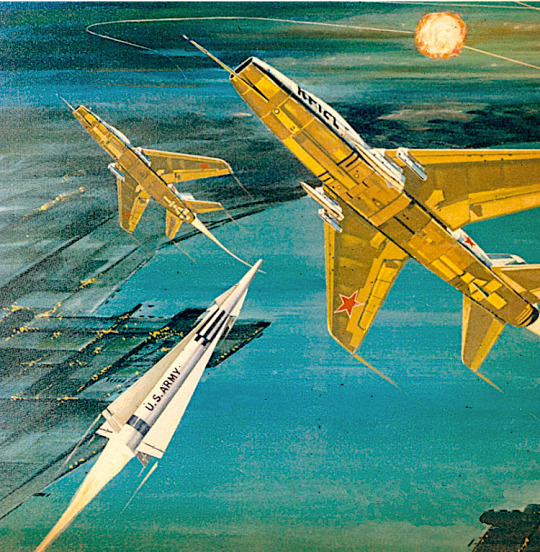
Air defense!
#vintage illustration#u.s. army#u.s. militiary#surface to air missiles#missiles#surface-to-air missiles#sams#russian jet fighters#jet fighters#strike aircraft#guided missiles#rockets#migs#mig 21#russian migs#the cold war#cold war era#anti-aircraft warfare#anti-aircraft missiles#anti-aircraft defense#interceptor aircraft#air defense
18 notes
·
View notes
Text
Trump confirms American F-35 contest with Russian Su-57 for India 5th Gen combat jet deal
By N. C. Bipindra New Delhi: It is official now. US President Donald Trump has effectively set up a contest between American F-35 and Russian Su-57 for India‘s big-ticket need for a fifth-generation fighter aircraft to catch up with arch-rival China on high-end combat jets. Trump, after meeting Indian Prime Minister Narendra Modi in Washington, D.C., announced that the US is offering India the…
#ADA#Advance Medium Combat Aircraft#AeroIndia#Aeronautical Development Agency#Aerospace#Air Force#aircraft carrier#AMCA#Andurill Industries#Anti-Tank Guided Missile#Army#Asia#Autonomous Systems#Autonomous Systems Industry Alliance#BEL#Bharat Electronics#Boeing Co.#CCS#China#Combat Jet#Defence#Defence Research and Development Organisation#Defense#Donald Trump#DRDO#Emmanuel Macron#F-16#F-21#F-35#Fifth Generation Fighter Aircraft
2 notes
·
View notes
Text
60 IRIS-T anti-aircraft guided missiles for Ukraine's air defence system
youtube
60 anti-aircraft guided missiles for the IRIS-T air defence system
This video describes the military situation in Ukraine on the 16th of January 2025
IRIS-T (infrared imaging system tail/thrust vector-controlled)
A family of short range infrared homing air-to-air and short to medium range surface-to-air missiles. It also is called AIM-2000.
#Youtube#Ukraine war#Germany#IRIS-T#anti-aircraft guided missiles#IRIS-T air defence system#16 of January 2025#short range surface-to-air missiles#surface-to-air missiles#infrared imaging system#tail/thrust vector-controlled#infrared homing missiles#medium range surface-to-air missiles#AIM-2000
0 notes
Link
The article "Merkava — The Home Grown Israeli Tank" by Peter Suciu provides a detailed history of the Merkava, Israel's main battle tank. The article traces the origins of the Merkava back to King Solomon's use of chariots and outlines Israel's need for a home-grown tank due to concerns regarding reliance on foreign technology. By the 1960s and 70s, the Israeli Defense Forces (IDF) sought to produce their own tanks after the UK's decision not to sell the Chieftain tank to Israel. As a result, the Merkava was developed with a focus on crew protection and survivability. Successive versions like the Mk I, Mk II, Mk III, and Mk IV incorporated advancements in firepower, protection, and technology, with the Mk IV featuring the Trophy Active Protection System to defeat missile threats. The latest Merkava Barak represents further evolution in defense technology, offering enhanced target detection and intelligence sharing capabilities. While the Merkava has not been widely exported, a few models are displayed in museums across Europe. The article highlights the progression of the Merkava as a pivotal element of Israel's armored forces.
#Merkava tank#Israel Defense Forces#IDF#Israeli military#tank warfare#armored corps#indigenous tank design#battlefield innovation#protection and survivability#Golani Brigade#David's Sling armored protection#urban warfare#engine in front design#troop compartment#artillery#mobile warfare#IDF Armored Corps School#Lahat anti-tank missile#Galil rifle#Merkava I#Merkava II#Merkava III#Merkava IV#Rafael Advanced Defense Systems#Elbit Systems#Israeli Air Force#Lebanon War#Yom Kippur War#Sinai Peninsula#Gaza Strip
0 notes
Text
#America's Pride THAAD#American THAAD vs Russian S-400#Anti Ballistic Missile System#Indian Air Defence Network#Indian S-400 purchase#S-400 Triumf
0 notes
Text
Anti-Aircraft Warfare Market Trends and Predictions for 2023 to 2028

Table of Contents
What is Anti-Aircraft Warfare?
How Does Anti-Aircraft Warfare Work?
Anti-Aircraft Warfare Industry Growth Drivers
Market Opportunities in Anti-Aircraft Warfare
Key Players in the Anti-Aircraft Warfare Company
Recent Developments in Anti-Aircraft Warfare
FAQs on Anti-Aircraft Warfare Market
Key Takeaways
What is Anti-Aircraft Warfare?
Anti-aircraft warfare involves the strategies, systems, and technologies used to defend against airborne threats, including aircraft, missiles, and drones. As military aircraft and unmanned aerial vehicles (UAVs) become more advanced, the need for effective air defense solutions intensifies. These systems are designed to detect, track, and neutralize airborne threats to protect strategic infrastructure, military assets, and civilian areas.
How Does Anti-Aircraft Warfare Work?
Anti-aircraft warfare relies on sophisticated technologies like radar systems, missile systems, and electronic warfare capabilities to detect and destroy incoming aerial threats. Key components include:
Radar Systems: Used for early detection and tracking of aerial threats over long distances.
Missile Defense Systems: Include surface-to-air missiles and interceptors capable of neutralizing enemy aircraft and missiles.
Electronic Warfare: Encompasses systems that disrupt enemy communications, radars, and navigation.
Directed Energy Weapons (DEWs): Utilize lasers or microwaves to destroy or disable targets, offering rapid response times and precision.
These technologies work in unison to create a layered defense, ensuring early threat detection, tracking, and interception to minimize potential damages.
You Can Download PDF Brochure: https://www.marketsandmarkets.com/pdfdownloadNew.asp?id=29678979
Anti-Aircraft Warfare Market Growth Drivers
The Anti-Aircraft Warfare Market is estimated to grow from USD 20.9 billion in 2023 to USD 28.6 billion by 2028, at a CAGR of 6.5%. Several key factors contribute to this growth:
Increased Air-Based Threats As air-based threats become more sophisticated, defense organizations worldwide are investing in cutting-edge air defense systems. Recent developments in hypersonic missile systems are pushing the boundaries of traditional air defense capabilities, driving innovation.
Development of Indigenous Defense Systems Countries like Russia, India, and China are heavily investing in indigenous air defense technologies to bolster their military capabilities. Examples include Russia’s S-500 missile defense system and China’s HQ-9B surface-to-air missile systems.
Government Support for Military Modernization Governments are channeling funds into research and development to enhance their defensive and offensive air capabilities. In the United States, for instance, the Department of Defense is spending nearly USD 1 billion annually on developing directed energy weapons for air defense.
Market Opportunities in Anti-Aircraft Warfare
The Anti-Aircraft Warfare Market presents various opportunities, including:
Directed Energy Weapons (DEWs) As DEW technology advances, militaries are looking to integrate these systems into their arsenals. DEWs offer rapid response times and cost-effective solutions for disabling threats with minimal collateral damage.
Counter-Unmanned Aerial Vehicle (C-UAV) Systems With the increasing use of UAVs, there is a growing demand for systems that can detect, track, and neutralize drone threats. The need for reliable C-UAV systems is critical to preventing unauthorized UAV access to restricted areas.
Advancements in Missile Systems The development of advanced missile systems capable of intercepting hypersonic missiles is a major opportunity for the market. Companies are investing heavily in missile technology to create faster, more accurate, and longer-range defense solutions.
Naval Air Defense Solutions As geopolitical tensions rise in regions with significant naval activity, demand for anti-aircraft systems on naval platforms has surged. Naval vessels equipped with advanced air defense systems are becoming essential for countries with significant maritime interests.
Ask for Sample Report: https://www.marketsandmarkets.com/requestsampleNew.asp?id=29678979
Key Players in the Anti-Aircraft Warfare Market
The Anti-Aircraft Warfare Market is dominated by a few well-established players with extensive product portfolios and global influence. These companies are at the forefront of innovation and have strong financial stability, enabling them to invest heavily in research and development. The key players include:
Lockheed Martin Corporation (US): A leader in missile defense systems, Lockheed Martin specializes in advanced technologies like the Phased Array Tracking Radar to intercept hypersonic missiles.
Raytheon Technologies Corporation (US): Known for its integrated air defense systems, Raytheon combines radars, command, control, and interceptors to create multi-layered defense solutions.
BAE Systems (UK): This company focuses on radar and electronic warfare systems, offering advanced solutions for both land and naval platforms.
Thales Group (France): Provides high-performance radar and missile systems, with a strong presence in the naval defense sector.
These companies actively pursue mergers, acquisitions, and strategic partnerships to expand their market share and enhance their technological capabilities.
Recent Developments in Anti-Aircraft Warfare
The Anti-Aircraft Warfare Market has seen significant advancements and collaborations in recent years. Notable developments include:
Lockheed Martin: Awarded a USD 2.45 billion contract in April 2023 for the production of advanced missile intercept systems, including upgrades to the PATRIOT missile.
Raytheon: In June 2023, Raytheon integrated multiple air defense components to create a comprehensive shield against air-based threats.
Thales Group: Signed an agreement in July 2023 with the Swedish Defence Materiel Administration for the delivery of SMART-L Multi Mission Fixed (MM/F) radars, bolstering Sweden’s long-range detection capabilities.
BAE Systems: Received a USD 14 million contract from DARPA in August 2022 to develop smaller, more powerful electronic warfare systems for use on unmanned platforms.
FAQs on Anti-Aircraft Warfare Market
What is the Anti-Aircraft Warfare Market size? The Anti-Aircraft Warfare Market is projected to grow from USD 20.9 billion in 2023 to USD 28.6 billion by 2028, with a CAGR of 6.5%.
What factors are driving market growth? Rising investments in hypersonic missile defense systems, the development of indigenous air defense solutions, and advancements in radar technology are the primary growth drivers.
Which region dominates the Anti-Aircraft Warfare Market? North America, led by the United States, holds the largest market share due to substantial defense spending and advanced technology development.
Who are the leading players in the market? The key players include Lockheed Martin Corporation, Raytheon Technologies Corporation, BAE Systems, and Thales Group, among others.
What challenges does the market face? Stringent regulations on arms transfer and technical challenges related to counter-UAV systems are some of the significant hurdles.
To Gain Deeper Insights Into This Dynamic Market, Speak to Our Analyst Here: https://www.marketsandmarkets.com/speaktoanalystNew.asp?id=29678979
Key Takeaways
Robust Growth: The Anti-Aircraft Warfare Market is set to experience substantial growth, driven by advancements in missile and radar technology.
Opportunities in DEWs and C-UAVs: Directed Energy Weapons and Counter-Unmanned Aerial Vehicle systems offer new growth avenues.
Regional Dominance: North America leads the market, but emerging economies are increasing their investments in indigenous air defense systems.
Technological Innovation: Companies are heavily investing in research and development, pushing the boundaries of existing technologies to counter new threats.
Strategic Partnerships: Leading companies are entering partnerships and joint ventures to enhance their product portfolios and expand market reach.
The Anti-Aircraft Warfare Market is evolving rapidly, driven by the need for advanced air defense solutions and the rise of hypersonic missile systems. With robust growth expected over the next five years, key players are investing heavily in technology to stay ahead. Despite challenges, the market offers substantial opportunities in DEWs, C-UAVs, and indigenous defense systems. As global defense spending rises, the market is poised to see significant advancements and continued innovation, shaping the future of air defense.
#anti-aircraft warfare market#air defense systems#hypersonic missiles#directed energy weapons#global defense market growth#lockheed martin#raytheon technologies
0 notes
Text
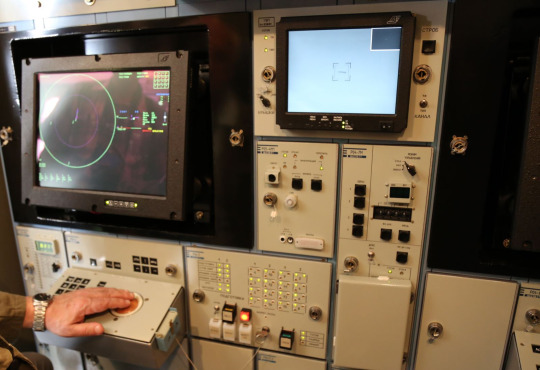
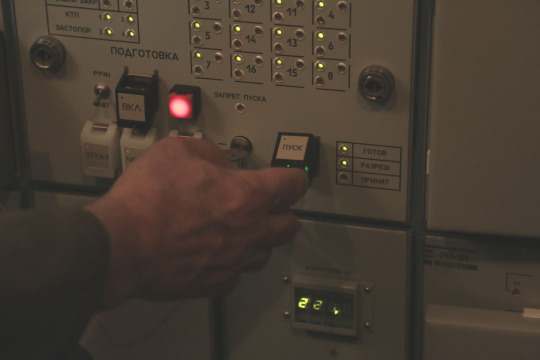
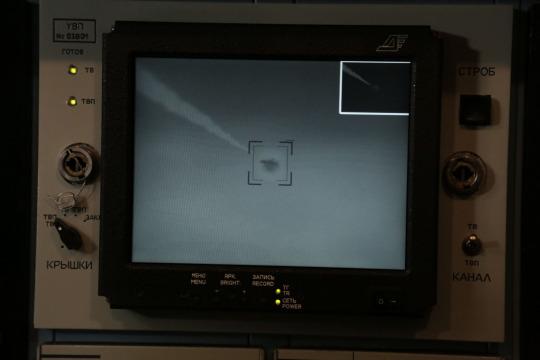
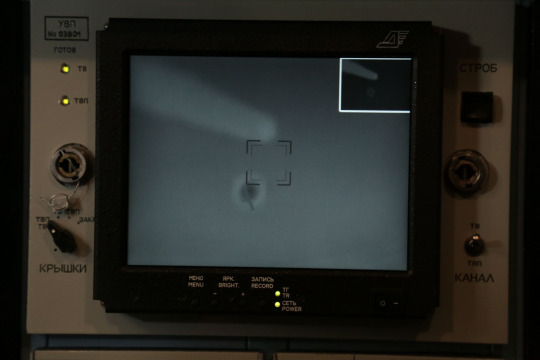
Tor hitting a cruise missile.
1 note
·
View note
Text
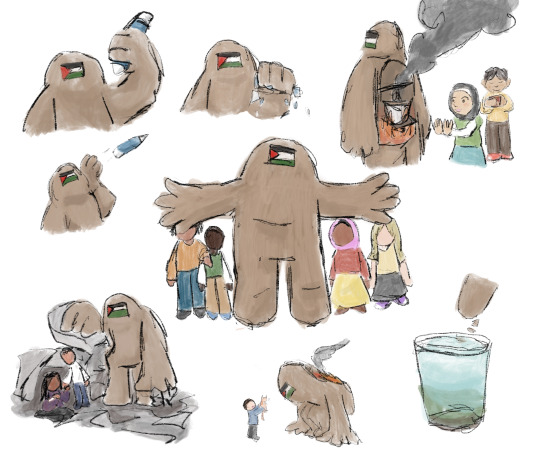
[ID: drawings of a golem animated by a palestinian flag painted on its forehead. it is seen: holding out its arms protectively in front of a crowd of children, the children also hold each other supportively; catching an air strike missile from the air and throwing it away or crushing it in its fist; turning its back so that a child can warm her hands by the earth oven built into its back, food in a pot is cooking on the fire and a boy holds a cup of steaming tea to his face and enjoys the aroma; clearing away rubble so a man can help up his wife who was buried underneath, she is clutching a baby to her chest; stooping down to look at a kitten a young boy is holding up to show it; and dissolving small flakes of clay from its finger into a glass of water, purifying it. end ID]
@fairuzfan asked people to create and share art for the strike. i wrote an artist statement and then set about trying to draw what i envisioned. artist statement below.
This golem is a protector that I wish I could gift to the children and adults in Gaza. The flag on its forehead is to show that love for the Palestinian people is an animating force for people fighting for a free Palestine all over the world, especially for those in Palestine who are trying to free themselves and their people. Love is the motivation for the call for a free Palestine, not hatred like people try to claim. It is very strong and fast and can catch air strikes out of midair and crush them to dust or throw them back in the direction they came from. It can lift all the rubble of a collapsed building very quickly so nobody can get trapped underneath. It has an earth oven in its back with an ever-burning flame that people can use to warm themselves and cook food and heat water to use to bathe themselves or make tea. Pieces of its clay can be crumbled up and mixed into water to make even the most brackish and unclean water pure and safe to drink.
The golem is always a bit of a tragic figure so I don't imagine it staying around forever once Palestine is free and it is no longer needed. I think it would use its great strength to help rebuild the destroyed houses, churches, schools, universities, hospitals, and mosques and then dive into the Jordan river and dissolve. It would clean the river of all pollution and make the water splash up over all the newly replanted fruit trees, causing them to grow big and strong. Its love for Palestine and its people can be tasted in the fruit they grow for generations.
I choose a specifically Jewish icon of protection because of how it feels to witness such horrors done in the supposed name of Judaism and the Jewish people. For many anti-zionist Jews, we feel like we are acting directly within the teachings of our stories and communities by opposing this genocide. It is difficult to understand how the very people and institutions who taught us these values now fight against them so fiercely. While obviously I would still oppose Israel were I not Jewish, the way I oppose Israel is directly informed by my Jewishness. I hope that someday, somehow, Judaism can bring as much joy and support to the Palestinian people as it has brought grief and destruction. That Jewish symbols used in the name of love and justice will bear more significance than the ones used in shows of hatred. Knowing the depth of the harm caused, I do not know if this is possible. But this artwork and everything I have dedicated myself to these past few months and continue to dedicate myself to in the future is born from this hope. I love you. Thank you for being on this planet with me. From the river to the sea, Palestine will be free! And it will be beautiful.
8K notes
·
View notes
Text
Although i certainly find universal nuclear disarmament to be a morally correct and honourable goal, it's also very clear that a reasonable part of those campaigning for it are very entrenched in anti-communist views - focusing with much strictness on the development of nuclear warheads by the DPRK, China and Russia (which isn't socialist, but nevertheless). At best they criticize the gigantic war industry of the US, but only by liberal metrics of "we should only have the necessary" and stuff like that. However, it is also clear that the development of nuclear armament - although not the main priority - should, very clearly, be something that socialist states now and in the future must consider. Even if not full blown nuclear armament - at least ICBMs and others like it. For it is not a mistake or an insanity that the DPRK, for example, has developed nuclear warheads; it knows that it is the subject of constant international harassment and it is prepared to have what is, for now, the most powerful rhetorical weapon against this. Future socialist countries should, yes, follow this! And, you see, a big number of communists mainly in the West (and to great extents elsewhere) do not see military strategy and development post-revolution as important. And this is stupid! Foolish! Russia was the subject of an inter-imperialist gangbang from all sides, and it only survived to form the Soviet Union with the development of a strong, renewed Red Army, big in bulk and in equipment. And socialist revolutions in the future will also need to have this: they'll need a Red Army, Red Navy and Red Air Force. And communists NOW should think about how this needs to be developed and need to learn strategy and need to be active within military circles (although, of course, in the imperial core the military is a much clearer peon of international capital than in the global south, so things are harder in this stance). Socialism here, now and in the future will certainly be striked with the combined forces of capital tumbling down on any form of organized proletariat. This happens to countries contrary to the imperialist USAmerican order, socialist or not: it imposed a military dictatorship in Cambodia in 1970, it couped Chile in 1973, it annihilated Grenada in 1983, it helped oust Aristide in Haiti in 2004, it destroyed Libya in 2011 - not counting many others. This means that developing a strong, truly proletarian armed force and developing means to defend it long term beyond that - ICBMs, and, of course, following the correct Korean path, even nuclear missiles - are crucial for the establishment of socialist states. And only when socialism is triumphant or on its way to triumph may these rhetorical and physical defenses of socialism be dismantled. Or only if the capitalist world surrenders all of it at the same time. However, believe me: they won't. As such, i'd say that in the 21st century, Lenin's little formula can be adapted to: Communism is Soviet power + electrification + ballistic missiles, in a gross simplification. The basis, the development and the defense.
231 notes
·
View notes
Text
Carl-Gustaf Recoilless Rifle Shooting Training
#german forces#german army#germany#german armed forces#military#aircraft#air force#us air force#usaf#fighter jet#aviation#fighter plane#plane#us navy#soldiers#soldier#army#anti tank#anti-tank missile#karl gustav#us army
7 notes
·
View notes
Text

A Cold War-era U.S. Army Nike Hercules transporter/launcher prototype.
#u.s. army#u.s. militiary#surface to air missiles#missiles#surface-to-air missiles#sams#guided missiles#rockets#the cold war#cold war era#anti-aircraft warfare#anti-aircraft missiles#anti-aircraft defense#air defense
17 notes
·
View notes
Text
India signs $233-mn deal to buy NAMIS anti-tank weapons, light vehicles
By A Correspondent New Delhi: India‘s Ministry of Defence (MoD) has signed contracts with state-run Armoured Vehicle Nigam Limited for the procurement of Nag Missile System (NAMIS) tracked version of anti-tank weapon platforms and Force Motors Limited and Mahindra & Mahindra Limited for around 5,000 light vehicles for the armed forces. A MoD statement said on Mar. 27, 2025, that the total cost…
#Aatmanirbhar Bharat#Acquisition#Air Force#Anti-Tank#Anti-Tank Guided Misile#Anti-Tank Missile#Armed Forces#Armoured Vehicle Nigam Limited#Army#Capital Expenditure#Capital Procurement#Coast Guard#Contract#Deal#Defence#Defence Acquisition Procedure#Defence Ministry#Defence Research and Development Laboratory#Defence Research and Development Organisation#Defence Secretary#Defense#DRDL#DRDO#Force Motors Limited#India#Indian Army#Industry#Jobs#Light Vehicles#Mahindra
0 notes
Text
HIIIIIIIIIIIMMMMMMMMMMMM ✨️🥺💖😭❤️✨️❤️💖💕🫠💖✨️
I got bonked in the head with a fridge while moving it off my front porch today and now I am consumed by Cato thoughts. Coincidence? 🤔 unlikely. /j
Actually it's cause @cosmic-cryptid-from-beyond keeps drawing him and making me insane and asked his age and I went back through all my old Cato nonsense and hrrrrgggg.
He's 400(ish), Probably. At least 300, more likely pushing 400.
Pretty old man 💖✨️☺️ grey in his beard and hair ✨️💖✨️💖✨️
That's all that's the thoughts. Just, him 💖 if my head wasn't so sore and i wasnt consumed by the amulet's curse I'd write something about him but alas. All i have is holding him in my cupped hands like a pretty rock. Observing. Pondering.
...Cato could've moved that fridge in like 30 seconds. But i wouldn't get to keep my wall. And might've still been hit in the face by it.
35 notes
·
View notes
Text
Re: the Fagot anti-tank rocket, it reminds me of my favorite story of Soviet weapon design.
So, the Nazis were working in infrared homing missiles during WW2 but never completed any by the time the war ended (though they got close).
The Americans collected a lot of information on these systems, through spies and Operation Paperclip, and started work on their own guided air-to-air missile: the AIM-9 Sidewinder.
They worked on it from 1946 to 1955, when it was operationally complete and authorized for mass production.
The first time they got used was the Second Taiwan Strait Crisis, in 1958. The Taiwanese air force was flying American F-86 Sabres, vs China's MiG-17s. The MiG-17 outclassed the F-86s, flying over them so high the Sabres couldn't hope to hit them, and then they could swoop down and attack when they had the advantage.
So the US decided to help out: they secretly helped Taiwan modify their F-86s with the new heat seeking missile, and provided something like a dozen of the missiles to use again the MiG-17s.
On the 24th of September, the F-86s engaged the MiG-17s with the new missiles, surprising them with the ability to attack when the MiG-17s were supposedly outside the operational range of the F-86s, shooting some planes down. This was the first use of guided air to air missiles in combat.
Four days later, there was another skirmish, and an F-86 shot an AIM-9 Sidewinder into a MiG-17... And it didn't explode.
The MiG-17 made it back to base, with the groundbreaking new missile type never before seen in the history of warfare, and it was mostly intact. The Soviets convinced the Chinese to send them the missile, and within two years they had developed the Vympel K-13: a clone of the AIM-9 Sidewinder.
The US took the best of Nazi scientists weapon development, then spent over a decade developing a never before seen super-weapon that would change air combat forever... And one of the first DOZEN fired ended up embedded in plane, unexplored, and then delivered to their greatest enemy.
They might as well just have mailed the schematics to the Kremlin. And I think that's hilarious.
524 notes
·
View notes
